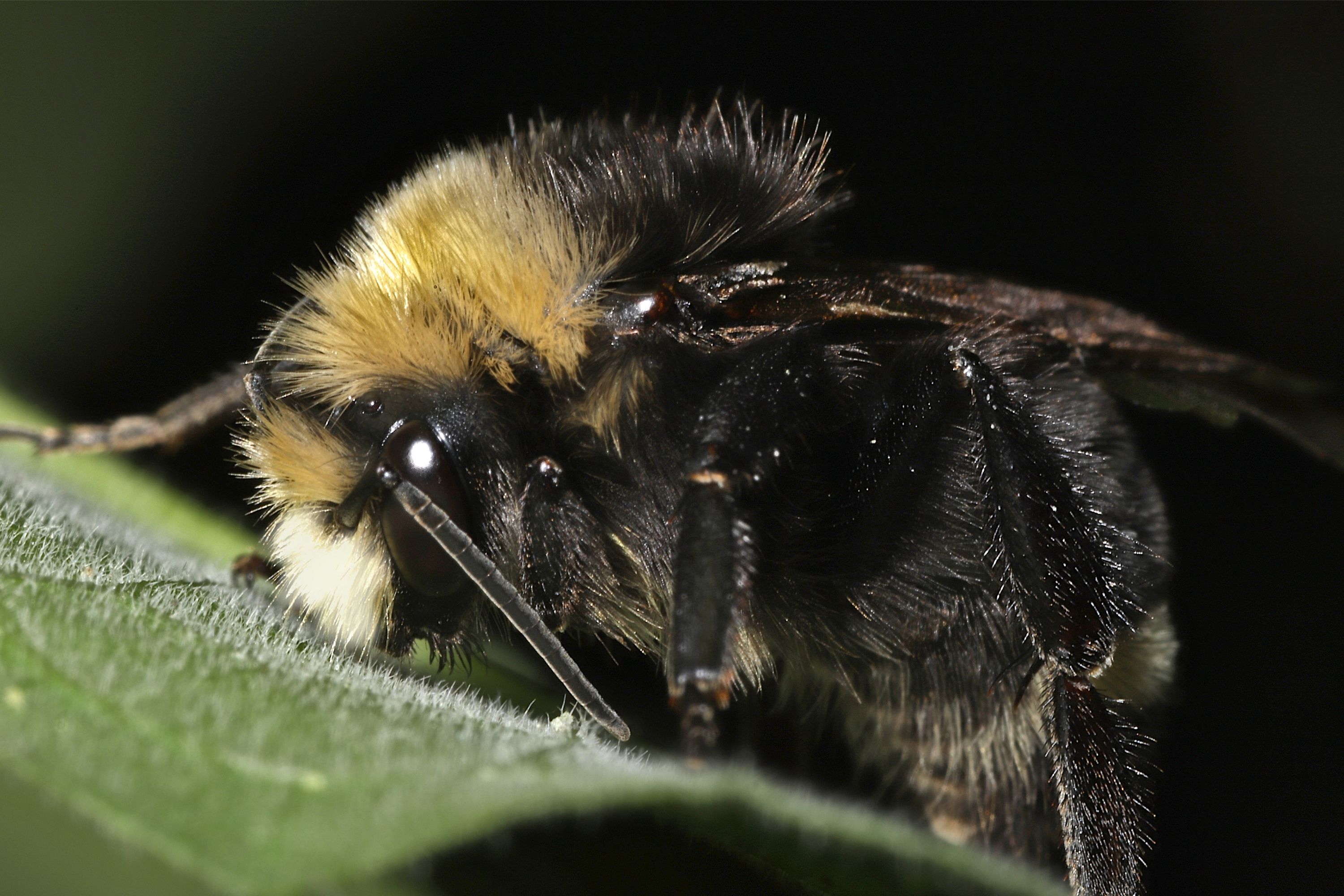Yellow-faced bumble bee
(Bombus vosnesenskii)

Description
Bombus vosnesenskii, the yellow-faced bumblebee, is a species of bumblebee native to the west coast of North America, where it is distributed from British Columbia to Baja California. It is the most abundant species of bee in this range, and can be found in both urban and agricultural areas. Additionally, B. vosnesenskii is utilized as an important pollinator in commercial agriculture, especially for greenhouse tomatoes. Though the species is not currently experiencing population decline, urbanization has affected its nesting densities, and early emergence of the B. vosnesenskii has been implicated in the increasing lack of bee diversity on the West coast. Bombus vosnesenskii has a number of distinctive features. These include short, even hair, the rounded angle of the basitarsus, which is the middle leg, and a square face. Additionally, the fringed hair of its hind legs forms the corbicula, or pollen basket. Queens are between 18 and 21 mm long. Workers are between 8 and 17 mm while males are between 10 and 15 mm. Queens, workers, and males all have medium length antennae and similarly shaped and sized eyes. They are patterned with black and yellow hairs. The queen and the female workers are almost always identical in coloring. They have almost entirely black thoraxes with stripes of yellow at the head and at the T4 segment of their thorax. The male drones mostly look similar to their female counterparts, but in some cases will have more yellow on their sides that extends farther up the back of the thorax. Although historical data for insect distribution is sparse in western North America, it is clear that Bombus vosnesenskii is not experiencing a population decline; it is amongst the most common bee species on the West Coast of the United States, and the most common bumble bee from Oregon northward. The nesting distribution ranges from British Columbia to Baja California. Historically, Bombus occidentalis, the so-called "western bumble bee" was the most common species, with a distribution all the way from California to British Columbia and Alaska, but diseases introduced by commercial rearing operations in the eastern United States brought coastal populations of B. occidentallis to the brink of extinction, and B. vosnesenskii has filled the gap.
Taxonomic tree:







